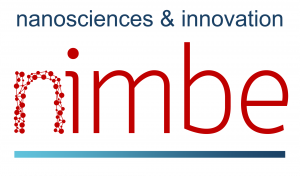Thesis
Chemical recycling of oxygenated and nitrogenated plastic waste by reductive catalytic routes
Chemistry
Since the 1950s, the use of petroleum-based plastics has encouraged the emergence of a consumption model focused on the use of disposable products. Global plastic production has almost doubled over the last 20 years, currently reaching 468 million tons per year. These non-biodegradable plastic are the source of numerous forms of environmental pollution. Since the 1950s, only 9% of the wastes have been recycled. The majority have been incinerated or sent to landfill. In the current context of this linear economy, health, climate and societal issues make it essential to transition to a circular approach to materials. This evolution requires the development of recycling methods that are both effective and robust. While the most common recycling methods currently in use are mainly mechanical processes that apply to specific types of waste, such as PET plastic bottles, the development of chemical recycling methods appears promising for treating waste for which no recycling channels exist. These innovative chemical processes make it possible to recover the carbonaceous material from plastics to produce new ones.
Within this objective of material circularity, this doctoral project aims to develop new chemical recycling routes for mixed oxygen/nitrogen plastic waste such as polyurethanes (insulation foam, mattresses, etc.) and polyamides (textile fibres, circuit breaker boxes, etc.), for which recycling routes are virtually non-existent. This project is based on a strategy of depolymerizing these plastics by the selective cleavage of the carbon-oxygen and/or carbon-nitrogen bonds to form the corresponding monomers or their derivatives. To do that, catalytic systems involving metal catalysts coupled with abundant and inexpensive reducing agents will be developed. In order to optimize these catalytic systems, we will seek to understand how they proceed and the mechanisms involved.
Within this objective of material circularity, this doctoral project aims to develop new chemical recycling routes for mixed oxygen/nitrogen plastic waste such as polyurethanes (insulation foam, mattresses, etc.) and polyamides (textile fibres, circuit breaker boxes, etc.), for which recycling routes are virtually non-existent. This project is based on a strategy of depolymerizing these plastics by the selective cleavage of the carbon-oxygen and/or carbon-nitrogen bonds to form the corresponding monomers or their derivatives. To do that, catalytic systems involving metal catalysts coupled with abundant and inexpensive reducing agents will be developed. In order to optimize these catalytic systems, we will seek to understand how they proceed and the mechanisms involved.
SL-DRF-26-0183
Le candidat devra avoir un excellent profil en chimie moléculaire avec une spécialisation en chimie inorganique/organométallique et ou en catalyse homogène. Un candidat ayant un intérêt pour la modélisation moléculaire et les études mécanistiques
October 1 2026
Paris-Saclay
Sciences Chimiques: Molécules, Matériaux, Instrumentation et Biosystèmes (2MIB)
Saclay
CEA
Direction de la Recherche Fondamentale
Institut rayonnement et matière de Saclay
Service Nanosciences et Innovation pour les Materiaux, la Biomédecine et l’Energie
Laboratoire de Chimie Moléculaire et de Catalyse pour l’Energie



